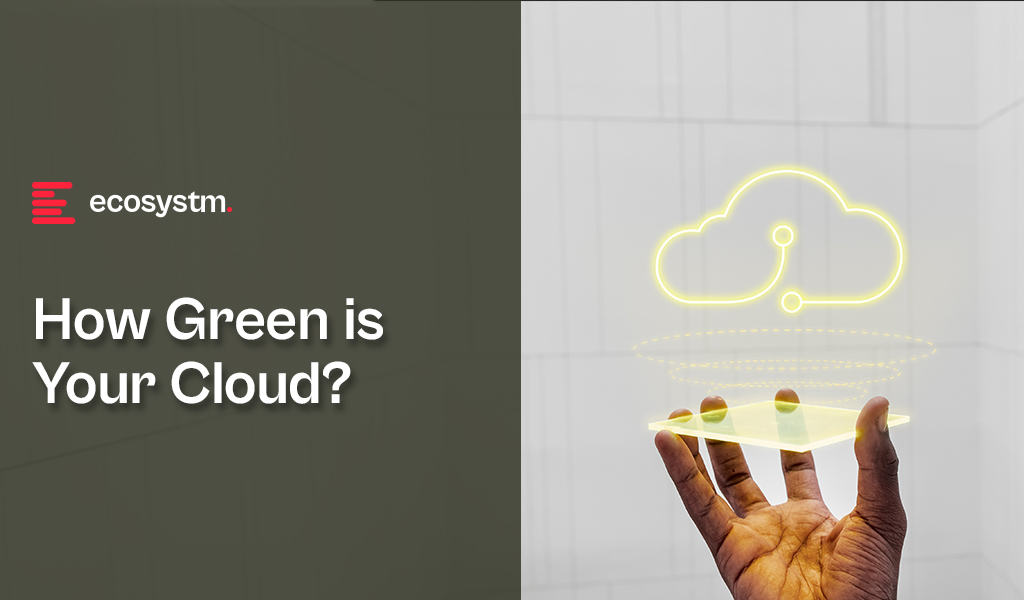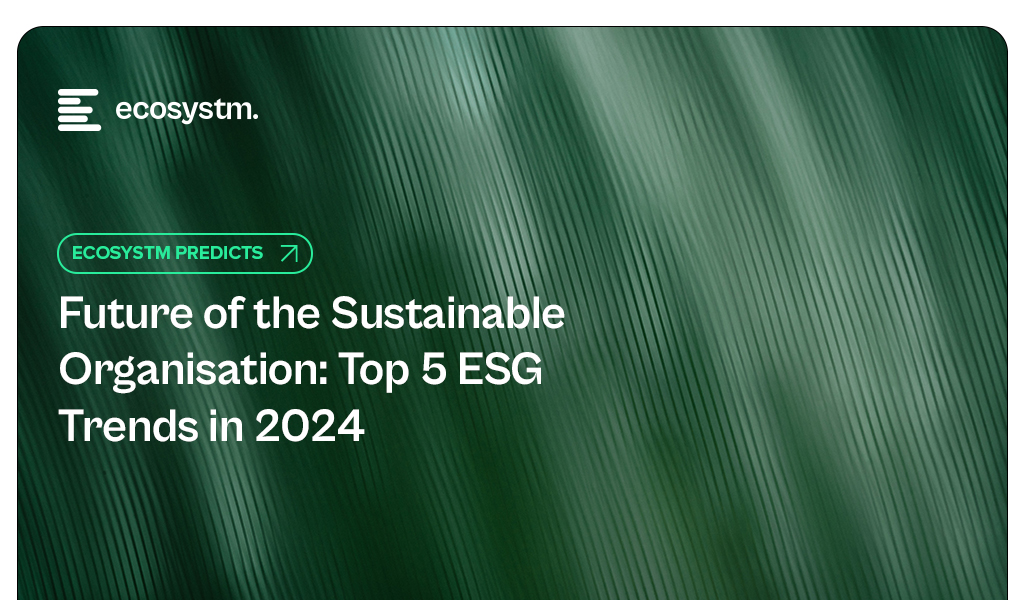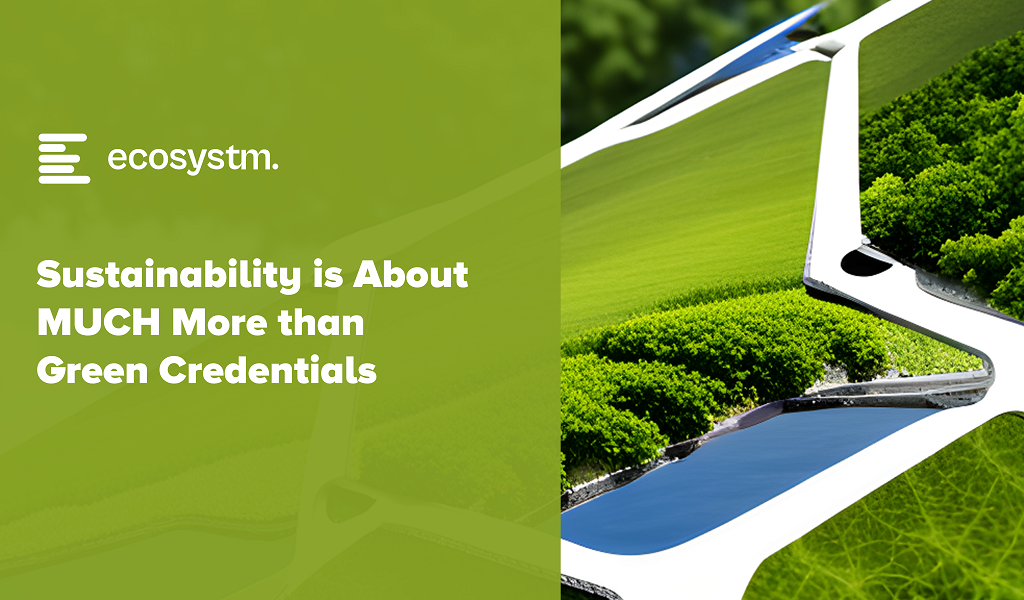Despite an increase in energy efficiency investment, the construction sector’s energy consumption and CO₂ emissions have rebounded to an all-time high. Buildings currently contribute 39% of global energy-related carbon emissions – 28% from operational needs like heating and cooling, and 11% from construction materials.
In the next three decades, with the global population expected to reach 9.7 billion, the construction industry will face the pressure to meet growing infrastructure and housing demands while adapting to stricter environmental regulations.
The urgency of climate action demands that governments mandate low-carbon practices in urban development.
Increase Use of Low-Carbon Materials
Traditional building materials like concrete, steel, and brick are strong and durable but environmentally costly. This high embodied carbon footprint is prompting a shift towards low-carbon alternatives. Indonesia is using ‘green cement’ – made using environmentally friendly materials – in the development of its new futuristic capital Nusantara. This has led to an estimated reduction in carbon emissions of up to 38% per tonne of cement so far.
Nordic countries are setting ambitious targets for low-carbon materials. Starting in 2025, Finland will require life cycle assessments and material declarations in construction to reduce emissions, detailing building components and material origins. Denmark is also prioritising low-carbon materials through energy-efficient designs, sustainable materials, and stringent building codes.
Mandate Whole-Life Carbon Emission Assessments
Whole Life-Cycle Carbon (WLC) emissions encompass all the carbon a building generates throughout its lifespan, from material extraction to demolition and disposal. Assessing WLC gives a comprehensive understanding of a building’s total environmental impact.
The London Plan is a roadmap for future development and achieving the goal of a zero-carbon city. The plan includes provisions for WLC analysis, specific energy hierarchies, and strategies to reduce London’s carbon footprint.
With a bold vision of a fully circular city by 2050, the Amsterdam Circular Strategy 2020-2025 lays out a comprehensive roadmap to achieve this goal. Key elements include mapping material flows to reduce reliance on virgin resources and mandating WLC assessments.
Enforce Clean Construction Standards
From green building codes to tax incentives, governments around the world are implementing innovative strategies to encourage sustainable building practices.
The Philippines’ National Building Code requires green building standards and energy efficiency measures for new buildings.
Seattle offers expedited permits for projects meeting embodied carbon standards, speeding up eco-friendly construction, and reinforcing the city’s environmental goals.
New Jersey offers businesses a tax credit of up to 5% for using low-carbon concrete and an additional 3% for concrete made with carbon capture technology.
Promote Large-Scale Adaptive Reuse
Large-scale adaptive reuse includes reducing carbon emissions by making existing buildings and infrastructure a larger part of the climate solution.
London’s Battersea Power Station restored its iconic chimneys and Art Deco façade, transforming it into a vibrant hub with residential, commercial, and leisure spaces.
The High Line in New York has been transformed into a public park with innovative landscaping, smart irrigation, and interactive art installations, enhancing visitor experience and sustainability.
Singapore using adaptive reuse to rejuvenate urban and industrial spaces sustainably. The Jurong Town Corporation is repurposing a terrace factory for sustainable redevelopment and preserving industrial heritage. In Queenstown, historical buildings in Tanglin Halt are being reused to maintain historical significance and add senior-friendly amenities.
Establish Circular Economy
As cities worldwide start exploring ways to go circular, some are already looking into different ways to leverage innovative practices to implement circular initiatives.
Toronto is embedding circular criteria into procurement by requiring circular economy profiles, vendor action plans, and encouraging circular design for parklets. The city also recommends actions for transitioning to a circular economy and is developing e-learning on circular procurement for staff.
Japan uses Building Information Modeling to optimise resource consumption and reduce waste during construction, with a focus on using recycled materials to promote sustainability in building projects.
Adopt Electric Vehicles
The share of EVs increased from 4% in 2020 to 18% in 2023 and is expected to grow in 2024. This trend reflects a global shift toward cleaner transportation, driven by technological advancements and rising environmental awareness.
The Delhi EV Policy aims to expand charging infrastructure and incentives, targeting 18,000 charging points by 2024, with 25% EV registrations and one charging outlet per 15 EVs citywide.
Singapore is adopting EVs to reduce land transport emissions as part of its net-zero goal, aiming to cut emissions by 1.5 to 2 million tonnes. The EV Roadmap targets cost parity with internal combustion engine (ICE) vehicles and 60,000 charging points by 2030.
Australia has set new rules to limit vehicle pollution, encouraging car makers to sell more electric vehicles and reduce transportation pollution.
Promote Circular Economy Marketplaces
Circular marketplaces play an important role in the new economy, changing the way we use, manufacture, and purpose materials and products.
The UK’s Material Reuse Portal aggregates surplus construction materials post-deconstruction, offering guidance and connections to service providers. It integrates with various data sources, can be customised for different locations, and provides free access to sustainable materials. Future plans include expanding marketplace partnerships to enhance material reuse.
Build Reuse is a US-based online marketplace specialising in salvaged and surplus building materials. It connects buyers and sellers for reclaimed items like wood, bricks, fixtures, and architectural elements, promoting resource efficiency and reducing construction waste.
For many organisations migrating to cloud, the opportunity to run workloads from energy-efficient cloud data centres is a significant advantage. However, carbon emissions can vary from one country to another and if left unmonitored, will gradually increase over time as cloud use grows. This issue will become increasingly important as we move into the era of compute-intensive AI and the burden of cloud on natural resources will shift further into the spotlight.
The International Energy Agency (IEA) estimates that data centres are responsible for up to 1.5% of global electricity use and 1% of GHG emissions. Cloud providers have recognised this and are committed to change. Between 2025 and 2030, all hyperscalers – AWS, Azure, Google, and Oracle included – expect to power their global cloud operations entirely with renewable sources.
Chasing the Sun
Cloud providers are shifting their sights from simply matching electricity use with renewable power purchase agreements (PPA) to the more ambitious goal of operating 24/7 on carbon-free sources. A defining characteristic of renewables though is intermittency, with production levels fluctuating based on the availability of sunlight and wind. Leading cloud providers are using AI to dynamically distribute compute workloads throughout the day to regions with lower carbon intensity. Workloads that are processed with solar power during daylight can be shifted to nearby regions with abundant wind energy at night.
Addressing Water Scarcity
Many of the largest cloud data centres are situated in sunny locations to take advantage of solar power and proximity to population centres. Unfortunately, this often means that they are also in areas where water is scarce. While liquid-cooled facilities are energy efficient, local communities are concerned on the strain on water sources. Data centre operators are now committing to reduce consumption and restore water supplies. Simple measures, such as expanding humidity (below 20% RH) and temperature tolerances (above 30°C) in server rooms have helped companies like Meta to cut wastage. Similarly, Google has increased their reliance on non-potable sources, such as grey water and sea water.
From Waste to Worth
Data centre operators have identified innovative ways to reuse the excess heat generated by their computing equipment. Some have used it to heat adjacent swimming pools while others have warmed rooms that house vertical farms. Although these initiatives currently have little impact on the environmental impact of cloud, they suggest a future where waste is significantly reduced.
Greening the Grid
The giant facilities that cloud providers use to house their computing infrastructure are also set to change. Building materials and construction account for an astonishing 11% of global carbon emissions. The use of recycled materials in concrete and investing in greener methods of manufacturing steel are approaches the construction industry are attempting to lessen their impact. Smaller data centres have been 3D printed to accelerate construction and use recyclable printing concrete. While this approach may not be suitable for hyperscale facilities, it holds potential for smaller edge locations.
Rethinking Hardware Management
Cloud providers rely on their scale to provide fast, resilient, and cost-effective computing. In many cases, simply replacing malfunctioning or obsolete equipment would achieve these goals better than performing maintenance. However, the relentless growth of e-waste is putting pressure on cloud providers to participate in the circular economy. Microsoft, for example, has launched three Circular Centres to repurpose cloud equipment. During the pilot of their Amsterdam centre, it achieved 83% reuse and 17% recycling of critical parts. The lifecycle of equipment in the cloud is largely hidden but environmentally conscious users will start demanding greater transparency.
Recommendations
Organisations should be aware of their cloud-derived scope 3 emissions and consider broader environmental issues around water use and recycling. Here are the steps that can be taken immediately:
- Monitor GreenOps. Cloud providers are adding GreenOps tools, such as the AWS Customer Carbon Footprint Tool, to help organisations measure the environmental impact of their cloud operations. Understanding the relationship between cloud use and emissions is the first step towards sustainable cloud operations.
- Adopt Cloud FinOps for Quick ROI. Eliminating wasted cloud resources not only cuts costs but also reduces electricity-related emissions. Tools such as CloudVerse provide visibility into cloud spend, identifies unused instances, and helps to optimise cloud operations.
- Take a Holistic View. Cloud providers are being forced to improve transparency and reduce their environmental impact by their biggest customers. Getting educated on the actions that cloud partners are taking to minimise emissions, water use, and waste to landfill is crucial. In most cases, dedicated cloud providers should reduce waste rather than offset it.
- Enable Remote Workforce. Cloud-enabled security and networking solutions, such as SASE, allow employees to work securely from remote locations and reduce their transportation emissions. With a SASE deployed in the cloud, routine management tasks can be performed by IT remotely rather than at the branch, further reducing transportation emissions.

The UN’s global stocktake synthesis report underscores the need for significant efforts to meet the ambitious goals of the Paris Agreement to keep the global warming limit to 1.5ºC, compared to pre-industrial levels. Achieving this requires collective action from governments, organisations, and individuals.
While regulators focus on mandates, organisations today are being influenced more by individual responsibility for positive impact. Customers and employees are leading ESG actions – another fast-emerging voice driving ESG initiatives are value chain partners looking to build sustainable supply chains.

Ecosystm research reveals that only 27% of organisations worldwide currently view ESG as a strategic imperative, yet we anticipate rapid change in the landscape.
Click below to find out what Ecosystm analysts Gerald Mackenzie, Kaushik Ghatak, Peter Carr and Sash Mukherjee consider the top 5 ESG trends that will shape organisations’ sustainability roadmaps in 2024.
Click here to download ‘Ecosystm Predicts: Top 5 ESG Trends in 2024’ as a PDF.
#1 Organisations Will Evolve ESG Strategies from Compliance to Customer & Brand Value
Many of the organisations that we talk to have framed their ESG strategy and roadmaps primarily in relation to compliance and regulatory standards that they need to meet, e.g. in relation to emissions reporting and reduction, or in verifying that their supply chains are free from Modern Slavery.
However, organisations that are more mature in their journeys have realised that ESG is quickly becoming a strategic differentiator and compliance is only the start of their sustainability journey.
Customers, employees, and investors are increasingly selective about the brands they want to associate with and expect them to have a purpose and values that are aligned with their own.

#2 Sustainability Will Remain a Stepping-Stone to Full ESG
Heading into 2024, the corporate continues to navigate the nuances between Sustainability and Environmental, Social, and Governance (ESG) initiatives. Sustainability, focused on environmental stewardship, is a common starting point for corporate responsibility, offering measurable goals for a solid foundation.
Yet, the transition to comprehensive ESG, which includes broader social and governance issues alongside environmental concerns, demands broader scope and deeper capabilities, shifting from quantitative to qualitative measures. The trend of merging sustainability with ESG risks is blurring distinct objectives, potentially complicating reporting and compliance, and causing confusion in the market. Nevertheless, this conflation ultimately paves the way for more integrated, holistic corporate strategies.
By aligning sustainability efforts with wider ESG goals, companies will develop more comprehensive solutions that address the entire spectrum of corporate responsibility.
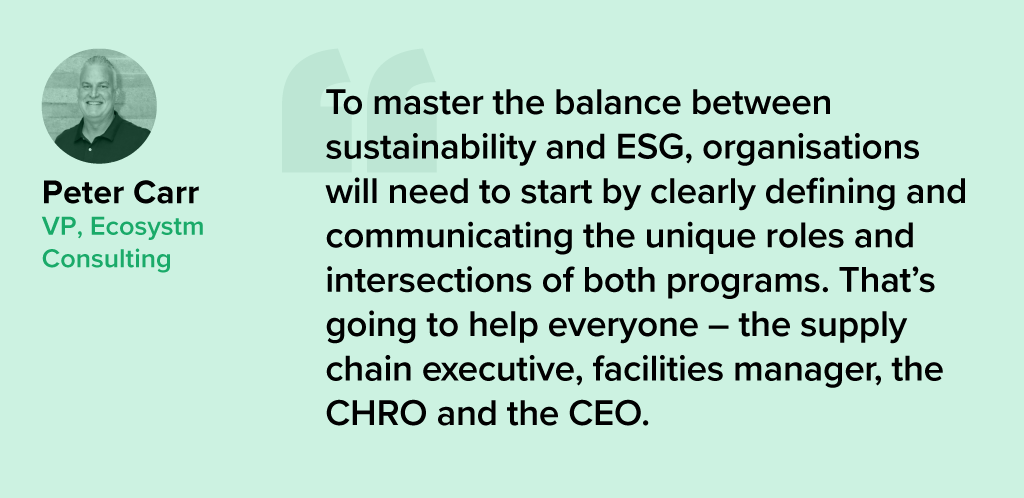
#3 ESG Consulting Will Grow – Till Industry Templates Take Over
At the end of 2022, LinkedIn buzzed with announcements of Chief Sustainability Officer appointments. However, the Global Sustainability Barometer Study reveals that only around one-third of global organisations have a dedicated sustainability lead. What changed?
Organisations have recognised that ESG is intricate, requiring a comprehensive focus and a capable team, not just a sustainability leader.
Each organisation’s path to sustainability is unique, shaped by factors like size, industry, location, stakeholders, culture, and values. Successfully integrating ESG requires a nuanced understanding of an organisation’s barriers, opportunities, and risks, making it challenging to navigate the sustainability journey alone. This is complicated by the absence of clear government/industry mandates and guidelines that frame best practices.
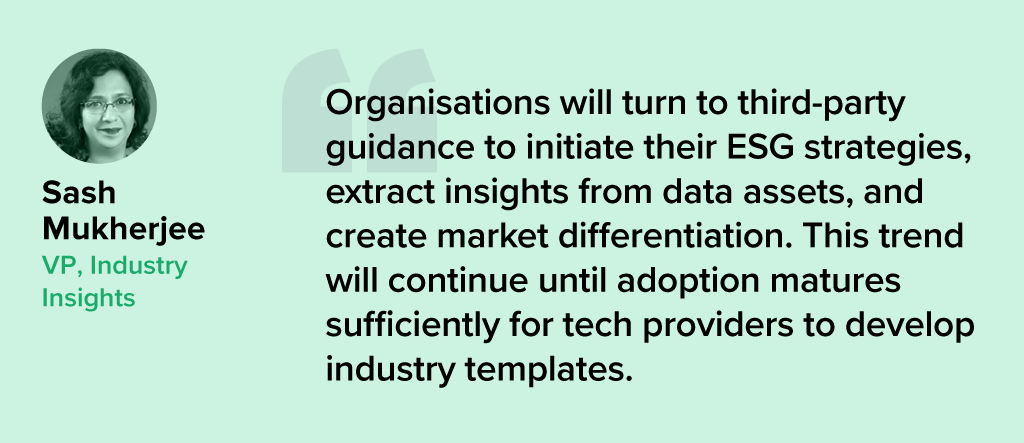
#4 Sustainability Tech Will Finally Gain Traction
Many organisations initiate sustainability journeys with promises and general strategies. While the role of technology in accelerating goals is recognised, alignment has been lacking. In 2024 sustainability tech will gain traction.
Environmental Tech. Improved sensors and analytics will enhance monitoring of air and water quality, carbon footprint, biodiversity, and climate patterns.
Carbon-Neutral Transportation. Advancements in electric and hydrogen vehicles, batteries, and clean mobility infrastructure will persist.
Circular Economy. Innovations like reverse logistics and product lifecycle tracking will help reduce waste and extend product/material life.
Smart Grids and Renewable Energy. Smart grid tech and new solutions for renewable energy integration will improve energy distribution.
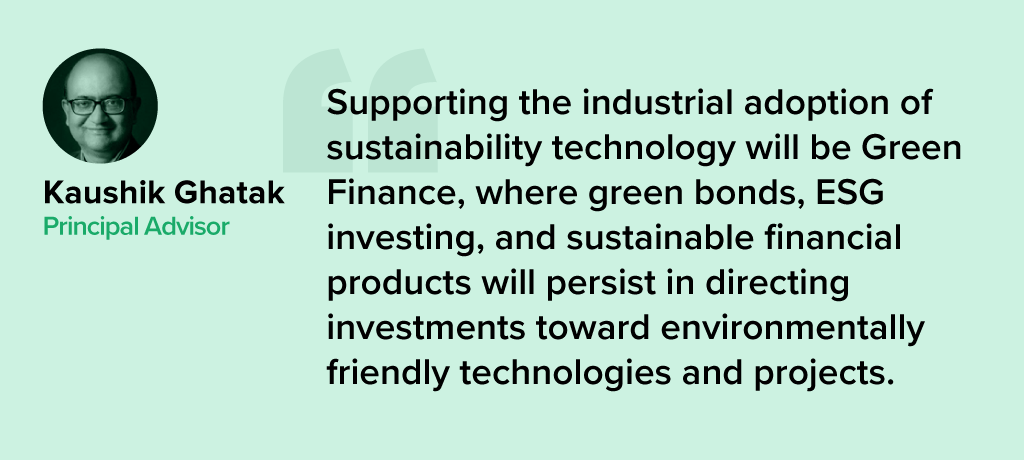
#5 Cleantech Innovation Will See Increased Funding
Cleantech is the innovation that is driving our adaptation to climate change. We expect that investments into, and the pace of innovation and adoption of Cleantech will accelerate into 2024.
As companies commit to their net-zero targets, the need to operationalise the technologies required to fuel this transition becomes all the more urgent. BloombergNEF reported that for Europe alone, nearly USD 220 billion was invested in Cleantech in 2022.
But to meet net-zero ambitions, annual investments in Cleantech will need to triple over the rest of this decade and quadruple in the next.
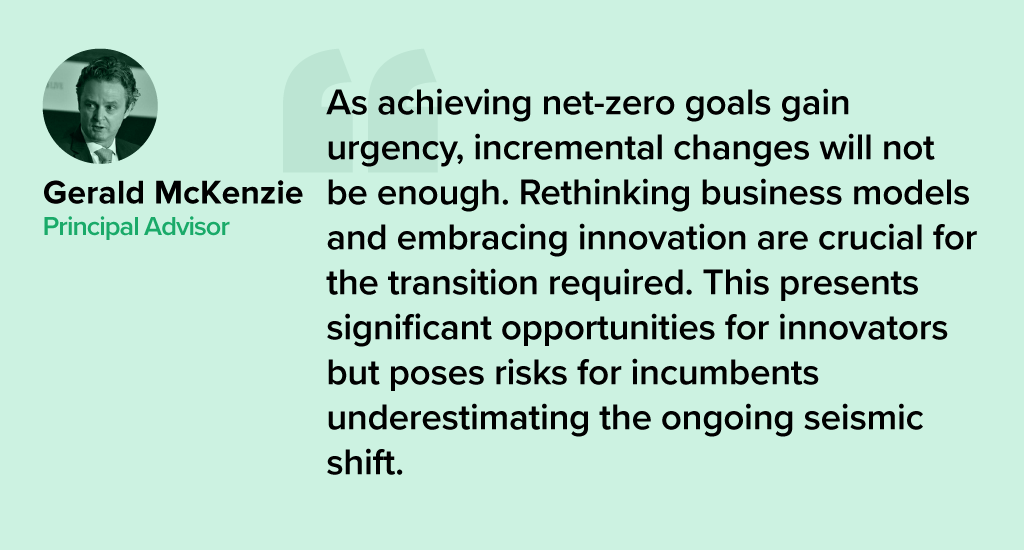

As an industry, the tech sector tends to jump on keywords and terms – and sometimes reshapes their meaning and intention. “Sustainable” is one of those terms. Technology vendors are selling (allegedly!) “sustainable software/hardware/services/solutions” – in fact, the focus on “green” or “zero carbon” or “recycled” or “circular economy” is increasing exponentially at the moment. And that is good news – as I mentioned in my previous post, we need to significantly reduce greenhouse gas emissions if we want a future for our kids. But there is a significant disconnect between the way tech vendors use the word “sustainable” and the way it is used in boardrooms and senior management teams of their clients.
Defining Sustainability
For organisations, Sustainability is a broad business goal – in fact for many, it is the over-arching goal. A sustainable organisation operates in a way that balances economic, social, and environmental (ESG) considerations. Rather than focusing solely on profits, a sustainable organisation aims to meet the needs of the present without compromising the ability of future generations to meet their own needs.
This is what building a “Sustainable Organisation” typically involves:
Economic Sustainability. The organisation must be financially stable and operate in a manner that ensures long-term economic viability. It doesn’t just focus on short-term profits but invests in long-term growth and resilience.
Social Sustainability. This involves the organisation’s responsibility to its employees, stakeholders, and the wider community. A sustainable organisation will promote fair labour practices, invest in employee well-being, foster diversity and inclusion, and engage in ethical decision-making. It often involves community engagement and initiatives that support societal growth and well-being.
Environmental Sustainability. This facet includes the responsible use of natural resources and minimising negative impacts on the environment. A sustainable organisation seeks to reduce its carbon footprint, minimise waste, enhance energy efficiency, and often supports or initiates activities that promote environmental conservation.
Governance and Ethical Considerations. Sustainable organisations tend to have transparent and responsible governance. They follow ethical business practices, comply with laws and regulations, and foster a culture of integrity and accountability.
Security and Resilience. Sustainable organisations have the ability to thwart bad actors – and in the situation that they are breached, to recover from these breaches quickly and safely. Sustainable organisations can survive cybersecurity incidents and continue to operate when breaches occur, with the least impact.
Long-Term Focus. Sustainability often requires a long-term perspective. By looking beyond immediate gains and considering the long-term impact of decisions, a sustainable organisation can better align its strategies with broader societal goals.
Stakeholder Engagement. Understanding and addressing the needs and concerns of different stakeholders (including employees, customers, suppliers, communities, and shareholders) is key to sustainability. This includes open communication and collaboration with these groups to foster relationships based on trust and mutual benefit.
Adaptation and Innovation. The organisation is not static and recognises the need for continual improvement and adaptation. This might include innovation in products, services, or processes to meet evolving sustainability standards and societal expectations.
Alignment with the United Nations’ Sustainable Development Goals (UNSDGs). Many sustainable organisations align their strategies and operations with the UNSDGs which provide a global framework for addressing sustainability challenges.
Organisations Appreciate Precise Messaging
A sustainable organisation is one that integrates economic, social, and environmental considerations into all aspects of its operations. It goes beyond mere compliance with laws to actively pursue positive impacts on people and the planet, maintaining a balance that ensures long-term success and resilience.
These factors are all top of mind when business leaders, boards and government agencies use the word “sustainable”. Helping organisations meet their emission reduction targets is a good starting point – but it is a long way from all businesses need to become sustainable organisations.
Tech providers need to reconsider their use of the term “sustainable” – unless their solution or service is helping organisations meet all of the features outlined above. Using specific language would be favoured by most customers – telling them how the solution will help them reduce greenhouse gas emissions, meet compliance requirements for CO2 and/or waste reduction, and save money on electricity and/or management costs – these are all likely to get the sale over the line faster than a broad “sustainability” messaging will.















